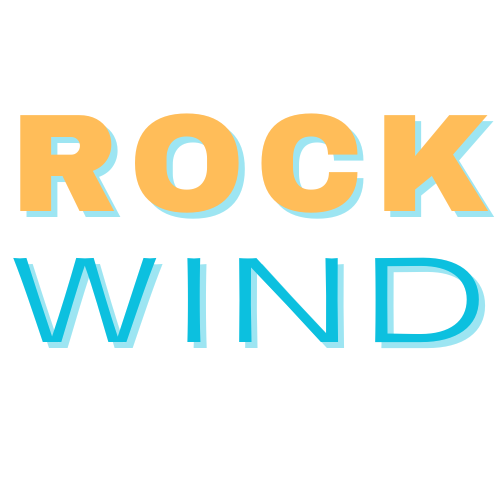Finding the Right Turbine For You
Rockwind carefully evaluates the turbine that we are going to rebuild. We want to ensure that it is well taken care of and suitable for rebuilding. Historically we have gotten our turbines from Europe where recycling turbines is commonplace, and the turbines have been well maintained with good records kept. Then we carefully transport the wind turbines to the US Midwest where there are lots of wind turbine service companies due to the thousands of wind turbines in the Midwest. We are planning to start using wind turbines now being decommissioned in the US as they are being taken down and being replaced by much larger wind turbines that can generate lots more power and where the huge size is not a major drawback.
These smaller decommissioned turbines (now typically 600 kw to 1 megawatt) were designed for 40 year lives, built to aerospace quality. They are being removed after 20 to 25 years of operation, still with lots of life remaining. But then we take the parts out that wear (largely the drivetrain that turns wind into rotation that runs the generators) and completely rebuild those components to better than new condition (due to the better technologies of materials and electronics available today than 20 years ago). We repaint the towers and rebuild blades and add features like blade leading edge tape and stall strips that make the fiberglass blades better (more efficient and longer lasting) now than when they were new.
The drivetrain consists of blades, blade hub, gearbox, generator, brakes, bearings and driveshafts. We disassemble those and send them to subcontractors who specialize in rebuilding these parts, currently mostly for windfarm operators. We pay for the highest quality parts that have been shown to last longer and perform better, unlike many large operators who avoid the best parts to keep costs down for what they see is a limited future life of a replaceable turbine. We then carefully reassemble and reinstall in the nacelle before shipping to the field.
Our goal, when selecting a decommissioned turbine, is to ensure we get the best value for our customers with a strong emphasis on minimal maintenance and a long operating life, so annual operating costs are kept low. Given use in each location of only one or two turbines (called distributed energy) , service people must travel a distance to service the turbine and replacements up in the tower are expensive, so our philosophy is to minimize those costs by using the highest quality parts (with extended wear lives) and advanced remote digital monitoring 24/7 so any pending fault will be detected early and can be fixed before the part fails. We are currently working on use of Artificial Intelligence Deep Learning to make each turbine a “smart” machine, using technology that can be retrofitted to older machines.
Knowing which decommissioned wind turbines are suitable for refurbishing is the key to Rockwind's success.
Yaw motor and control
The yaw motor and gearing help to guide the nacelle so the blades are facing into the wind in order to maximize power production. The yaw motor is fed information from the weather monitoring system which tells the control system the wind direction and speed. Refurbishing and renovation of this system includes:
Rebuilt or new yaw motors with digital control
Turbine blades
As a rule, the blades are most likely to be damaged by the environment - particulates in the air that help to dull the blade edges and the paint finish. While impact with birds and lightening is rare, it does occur and so the blades are inspected for any damage, and repaired if needed. Renovation of the fiberglass composing blade includes:
The leading edges are taped (with special very strong tapes that resist wind, rain and dust erosion) for longer life and quieter performance. This technology was not available when these blades were first built.
Modern electronic controls
Rockwind partners with wind turbine controller manufactures to install the most modern wind turbine control system. This system allows Rockwind to monitor the operation of the wind turbine remotely 24/7. It allows for remote computerized health monitoring of the wind turbine. These controllers are connected by ethernet to internet – remote computer display of conditions and productivity, as well as drive train machinery health monitoring.
Siting the Turbine
After being refurbished, the turbine is delivered to your site, and erected by an experienced and bonded crew.
Refurbishing the wind turbine
While we take extra care in choosing which turbines are acceptable candidates for refurbishing and renovating, the true condition of the turbine is not known while it's still in the field. The question of whether the turbine will meet our high standards can only be answered after we have shipped it to our shop. That is where the complete process of disassembly and inspection occurs. Every component on the turbine undergoes a detailed inspection to look for outdated, malfunctioning, or worn or broken parts. That is when the true renovation begins.
Gearbox and generator
The gearbox and generator are two of the main components in the wind turbine. Both components are subject to loads and stresses not necessarily visible to the naked eye. Inspection of the gear box housing, the bearings, the gears, seals, and condition of the oil (whether it contained contaminants) helps to determine the operating condition of the turbine in its previous location.
Refurbishing and renovation of the gearbox and generator include:
Rebuilt, re-geared gearbox, either Flender (now Winergy) or Hansen (now ZF).
The gearboxes are rebuilt by the vendor or a vendor authorized repair facility.
Rebuilt or new generator (ceramic bearings are an option)





